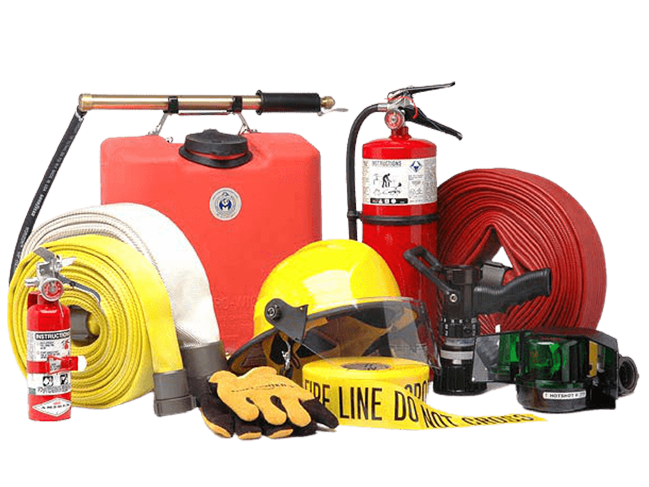Understanding Fire Classes Could Save Your Life
Know Your Fire: Understanding Fire Classes Could Save Your Life

Fire equipment suppliers in Qatar
Fires may seem like a single destructive force, but not all fires are alike—using the wrong extinguishing method can escalate the danger. This is where fire classes become essential. As a leading fire equipment supplier in Qatar, RGIFIRE emphasizes that fires are classified by their fuel source, and understanding these distinctions is crucial for selecting the appropriate fire extinguisher. With our QCDD-compliant equipment tailored for each fire class, RGIFIRE ensures you can respond safely and effectively to any fire emergency.
Types of Fire Classes and Their Common Sources
Class A Fires – Ordinary Combustibles
Fires that involve ordinary combustible materials such as wood, paper, cloth, trash, and various types of plastics are categorized as Class A fires, which are the most common type of fire and typically occur in homes, offices, and other everyday environments where these materials are frequently present and easily ignitable.
How to fight it: Never use water — it can spread the fire. Use a Class B or ABC extinguisher. These remove oxygen and smother the fire.

Class B Fires – Flammable Liquids
Fires fueled by flammable liquids or gases such as gasoline, oil, grease, paint, alcohol, and propane are classified as Class B fires, and they commonly occur in places like kitchens, garages, gas stations, and laboratories where these volatile substances are stored, used, or handled.
How to fight it: Never use water — it can spread the fire. Use a Class B or ABC extinguisher. These remove oxygen and smother the fire.

Class C Fires – Electrical Fires
Fires involving electrical components such as wiring, circuit breakers, appliances, and electrical panels are classified as Class C fires, typically occurring in places like offices, homes, server rooms, and industrial buildings where live electrical systems can spark or short-circuit, leading to potential fire hazards.
How to fight it: First, cut the power if you can safely do so. Use a Class C or ABC extinguisher that doesn’t conduct electricity.

Class D Fires – Combustible Metals
Fires fueled by reactive metals such as magnesium, titanium, sodium, and potassium are classified as Class D fires, typically occurring in laboratories, industrial plants, and manufacturing facilities where these combustible metals are handled, processed, or stored, and can ignite under high heat or friction.
How to fight it: Use a Class D extinguisher, which contains a dry powder specifically for metal fires. Water or regular extinguishers can cause violent reactions—avoid at all costs.

Class K Fires – Cooking Oils & Fats
Fires caused by cooking substances such as deep fryers, cooking oils, animal fats, and commercial kitchen equipment are classified as Class K fires, commonly occurring in restaurants, cafeterias, food trucks, and some home kitchens where high-temperature cooking with grease and oil is frequently performed.
How to fight it: Use a Class K extinguisher, which cools and smothers the fire using a special wet chemical agent. Don’t use water—it causes flaming oil to splash and spread.

Class A Fires – Ordinary Combustibles

Fires that involve ordinary combustible materials such as wood, paper, cloth, trash, and various types of plastics are categorized as Class A fires, which are the most common type of fire and typically occur in homes, offices, and other everyday environments where these materials are frequently present and easily ignitable.
How to fight it: Never use water — it can spread the fire. Use a Class B or ABC extinguisher. These remove oxygen and smother the fire.
Class B Fires – Flammable Liquids

Fires fueled by flammable liquids or gases such as gasoline, oil, grease, paint, alcohol, and propane are classified as Class B fires, and they commonly occur in places like kitchens, garages, gas stations, and laboratories where these volatile substances are stored, used, or handled.
How to fight it: Never use water — it can spread the fire. Use a Class B or ABC extinguisher. These remove oxygen and smother the fire.
Class C Fires – Electrical Fires

Fires involving electrical components such as wiring, circuit breakers, appliances, and electrical panels are classified as Class C fires, typically occurring in places like offices, homes, server rooms, and industrial buildings where live electrical systems can spark or short-circuit, leading to potential fire hazards.
How to fight it: First, cut the power if you can safely do so. Use a Class C or ABC extinguisher that doesn’t conduct electricity.
Class D Fires – Combustible Metals

Fires fueled by reactive metals such as magnesium, titanium, sodium, and potassium are classified as Class D fires, typically occurring in laboratories, industrial plants, and manufacturing facilities where these combustible metals are handled, processed, or stored, and can ignite under high heat or friction.
How to fight it: Use a Class D extinguisher, which contains a dry powder specifically for metal fires. Water or regular extinguishers can cause violent reactions—avoid at all costs.
Class K Fires – Cooking Oils & Fats

Fires caused by cooking substances such as deep fryers, cooking oils, animal fats, and commercial kitchen equipment are classified as Class K fires, commonly occurring in restaurants, cafeterias, food trucks, and some home kitchens where high-temperature cooking with grease and oil is frequently performed.
How to fight it: Use a Class K extinguisher, which cools and smothers the fire using a special wet chemical agent. Don’t use water—it causes flaming oil to splash and spread.
Choose the Right Extinguisher
There’s no “one-size-fits-all” fire extinguisher—unless you go with a multi-class (ABC) extinguisher, which is a great option for general home and office safety.
| Fire Class | Common Fuel | Best Extinguisher |
|---|---|---|
| Class A | Wood, paper, cloth | Water, A, or ABC |
| Class B | Gasoline, oil, paint | B or ABC |
| Class C | Electrical equipment | C or ABC (non-conductive) |
| Class D | Metals (magnesium, etc.) | D (dry powder) |
| Class K | Cooking oils, animal fats | K (wet chemical) |
Conclusion
Understanding fire classes empowers you to react quickly and correctly. Whether you’re at home, work, or in a high-risk setting, this knowledge could be the difference between a close call and a disaster.
So next time you walk past a fire extinguisher, check the label. Know what kind of fires it can handle. And make sure you’re ready—not just to fight a fire, but to fight the right kind of fire.


